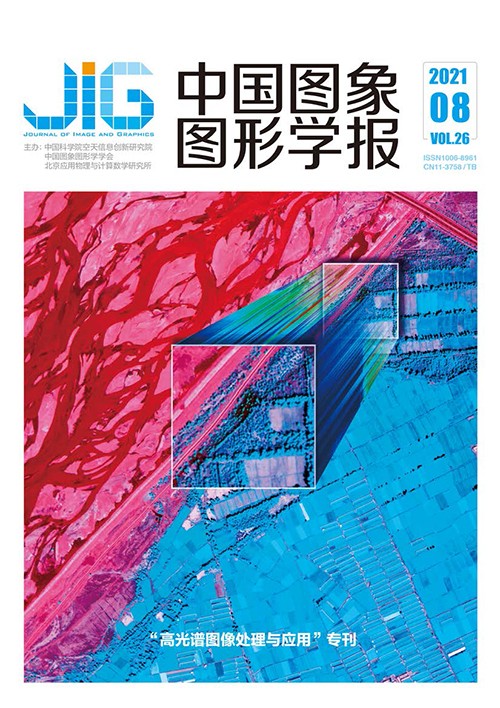
高光谱图像在生物医学中的应用
摘 要
高光谱成像(hyperspectral imaging,HSI)作为生物医学可视化的一种新兴技术,在生物医学领域的研究正逐渐受到关注。随着高光谱成像技术以及精准医学的迅速发展,将高光谱成像技术应用于近距离的医学诊断成为新的研究趋势。高光谱成像技术能同时获取生物组织的2维空间信息和1维光谱信息,覆盖可见光、红外和紫外等光谱范围,具有较高的光谱分辨率,可提供有关组织生理、形态和生化成分的诊断信息,为生物组织学研究提供更精细的光谱特征,进而为医学病理诊断提供更多辅助信息。本文介绍了高光谱成像技术的基本原理、高光谱显微成像系统的基本构成及特点。基于此,总结并阐述了高光谱成像技术在疾病诊断和手术指导中的应用进展,涉及其在癌症、心脏病、视网膜疾病、糖尿病足、休克、组织病理学和图像引导手术等方面的应用。综合分析了高光谱成像技术在生物医学领域应用的局限性,并提出了生物医学研究领域中该技术的未来发展方向。
关键词
Application of a hyperspectral image in medical field: a review
Li Wei, Lyu Meng, Chen Tianhong, Chu Zhaoyao, Tao Ran(School of Information and Electronics, Beijing Institute of Technology, Beijing 100081, China) Abstract
Hyperspectral imaging (HSI), also known as imaging spectrometer, originated from remote sensing and has been explored for various applications. This tool has been applied in many fields, such as archaeology and art protection, vegetation and water resources control, food quality and safety control, forensics, crime scene detection, and biomedicine, owing to its advantages in acquiring 2D images in a wide range of electromagnetic spectrum. These applications mainly cover the ultraviolet (UV), visible (VIS), and near-infrared (near-IR or NIR) regions. HSI acquires a 3D dataset called hypercube, with two spatial dimensions and one spectral dimension. Spatially resolved spectral imaging obtained by HSI provides diagnostic information about the tissue physiology, morphology, and composition. Furthermore, HSI can be easily adapted to other conventional techniques, such as microscopy and fundus camera. As an emerging imaging technology, HSI has been explored in a variety of laboratory experiments and clinical trials, which strongly indicates that HSI has a great potential for improving accuracy and reliability in disease detection, diagnosis, monitoring, and image-guided surgeries. In the past two decades, the HSI technology has been rapidly developed in hardware and systems. Most medical HSIs only detect the UV, VIS, and near-IR regions of light. Therefore, the exploration of HSI in the mid-IR spectrum may bring new insights for disease detection, diagnosis, and monitoring. The HSI technology is also combined with other imaging methods, such as preoperative positron emission tomography and intraoperative ultrasound, to overcome the limitation on the penetration of biological tissues and broaden HSI application areas. With the increasing integration of technologies, such as microscopes, colposcopy, laparoscopy, and fundus cameras, HSI is becoming an important part of medical imaging technology, which provides important information for potential clinical applications at the molecular, cell, tissue, and organ level. The clinical application of HSI is clearly in adolescence, and more verification is needed before it can be safely and effectively used in clinical practice. With the development of hardware technology, image analysis methods, and computing capabilities, HSI is used for the diagnosis and monitoring of non-invasive diseases, the identification and quantitative analysis of cancer biomarkers, image-guided minimally invasive surgery, and targeted drug delivery. However, HSI, as an emerging technology, also has certain limitations. At present, the application of hyperspectral detection technology in the medical field is still in the experimental stage. Useful information must be extracted from the large amount of data contained in each medical HSI. Data calibration and correction, data compression, dimensionality reduction, and analysis of data to determine the final results require a certain amount of time, which are also major challenges in the biomedical field. Higher spectral resolution, spatial resolution, and larger spectral database provide substantial spatial and spectral information. Accordingly, the main research topics in the future are the manner by which to quickly collect images of target objects in real time in a short period, effectively integrate spectroscopic instruments and algorithms, accurately diagnose the results, and combine with other imaging methods for fusion data analysis. The HSI is widely used and plays a greater role in the field of biomedicine owing to its continuous development and improvement. This work provides a comprehensive overview of HSI technologies and its medical applications, such as applications in cancer, heart disease, retinopathy, diabetic foot, shock, histopathology, and image-guided surgery. Moreover, this work presents an overview of the literature on the medical HSI technology and its applications. This work reviews the basic principles, structure, and characteristics of HSI system and elaborates the application progress of HSI in disease diagnosis and surgical guidance in recent years and analyzes the limitations of HSI and its future development direction.
Keywords
medical hyperspectral image precision medicine medicine hyperspectral image analysis disease diagnosis image-guided surgery
|



 中国图象图形学报 │ 京ICP备05080539号-4 │ 本系统由
中国图象图形学报 │ 京ICP备05080539号-4 │ 本系统由